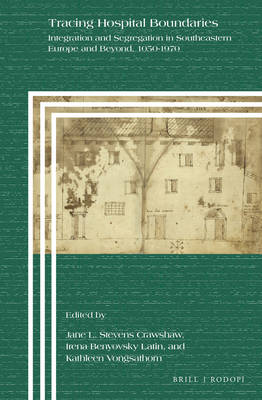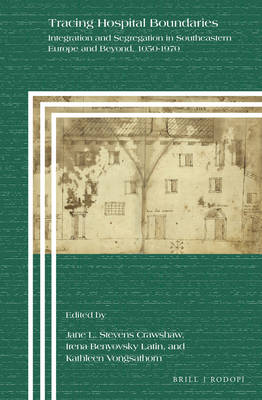
- Afhalen na 1 uur in een winkel met voorraad
- Gratis thuislevering in België vanaf € 30
- Ruim aanbod met 7 miljoen producten
- Afhalen na 1 uur in een winkel met voorraad
- Gratis thuislevering in België vanaf € 30
- Ruim aanbod met 7 miljoen producten
Zoeken
Tracing Hospital Boundaries
Integration and Segregation in Southeastern Europe and Beyond, 1050-1970
€ 262,95
+ 525 punten
Omschrijving
Tracing Hospital Boundaries explores, for the first time, how the forces of both integration and segregation shaped hospitals and their communities between the eleventh and twentieth centuries in Europe, North America and Africa. Within this broad comparative context it also shines a light on a number of case studies from Southeastern Europe.
The eleven chapters show how people's access to, and experience of, healthcare institutions was affected by social, cultural and economic, as well as medical, dynamics. These same factors intersected with developing healthcare technologies to shape hospital design and location, as well as internal policies and practices. The volume produces a new history of the hospital in which boundaries - both physical and symbolic - are frequently contested and redrawn.
Contributors are Irena Benyovsky Latin, David Gentilcore, Annemarie Kinzelbach, Rina Kralj-Brassard, Ivana Lazarevic, Clement Masakure, Anna Peterson, Egidio Priani, Gordan Ravančic, Jonathan Reinarz, Jane Stevens Crawshaw, David Theodore, Christina Vanja, George Weisz, and Valentina Zivkovic.
The eleven chapters show how people's access to, and experience of, healthcare institutions was affected by social, cultural and economic, as well as medical, dynamics. These same factors intersected with developing healthcare technologies to shape hospital design and location, as well as internal policies and practices. The volume produces a new history of the hospital in which boundaries - both physical and symbolic - are frequently contested and redrawn.
Contributors are Irena Benyovsky Latin, David Gentilcore, Annemarie Kinzelbach, Rina Kralj-Brassard, Ivana Lazarevic, Clement Masakure, Anna Peterson, Egidio Priani, Gordan Ravančic, Jonathan Reinarz, Jane Stevens Crawshaw, David Theodore, Christina Vanja, George Weisz, and Valentina Zivkovic.
Specificaties
Betrokkenen
- Uitgeverij:
Inhoud
- Aantal bladzijden:
- 292
- Taal:
- Engels
- Reeks:
- Reeksnummer:
- nr. 102
Eigenschappen
- Productcode (EAN):
- 9789004404427
- Verschijningsdatum:
- 9/04/2020
- Uitvoering:
- Hardcover
- Formaat:
- Genaaid
- Afmetingen:
- 155 mm x 235 mm
- Gewicht:
- 557 g

Alleen bij Standaard Boekhandel
+ 525 punten op je klantenkaart van Standaard Boekhandel
Beoordelingen
We publiceren alleen reviews die voldoen aan de voorwaarden voor reviews. Bekijk onze voorwaarden voor reviews.










